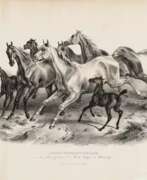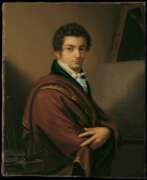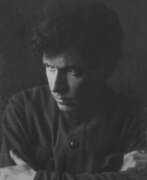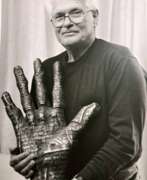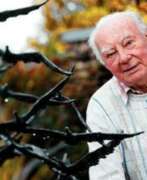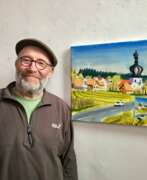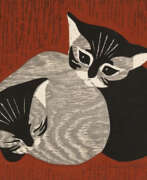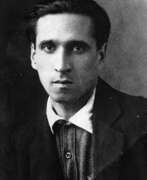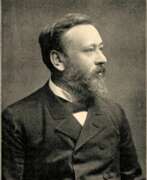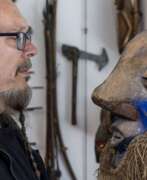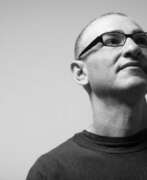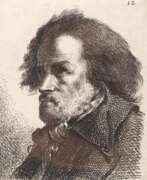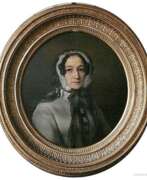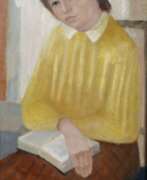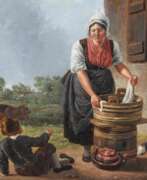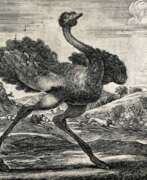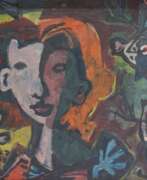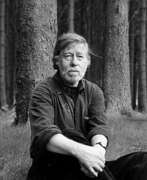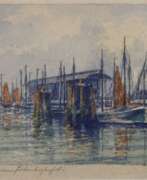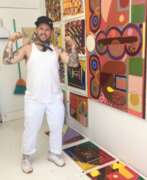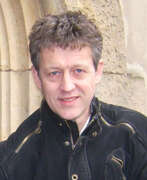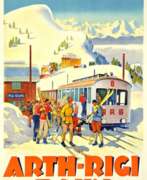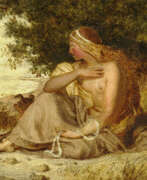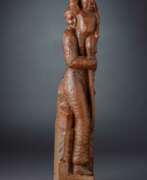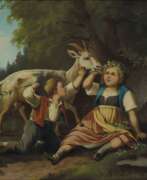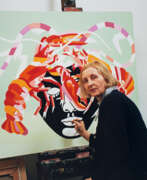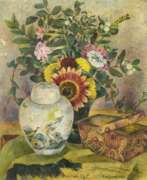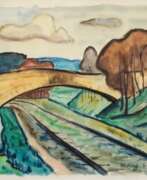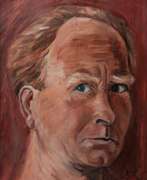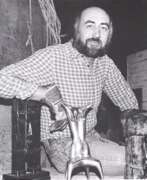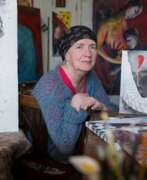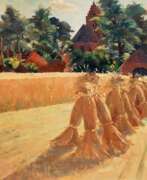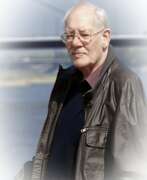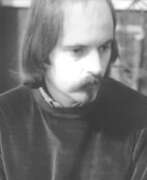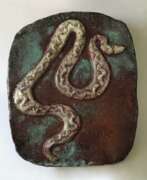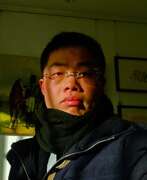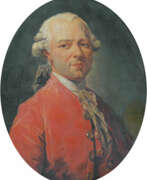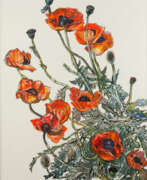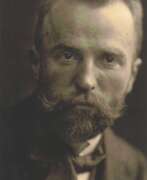Graphic artists Animalistic
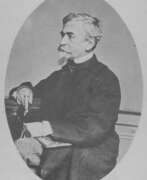

Benno Rafael Adam is a German animalist painter.
He began his fine art studies under the tutelage of his father, the balloonist painter Albrecht Adam. He masterfully depicted hunting dogs and horses, especially scenes of hunting wild animals. Benno Adam also illustrated several textbooks and manuals on livestock breeding.
Benno's son Emil Adam also became an artist.
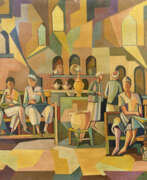



Christiaan Karel Appel was a Dutch painter, sculptor, and poet. He started painting at the age of fourteen and studied at the Rijksakademie in Amsterdam in the 1940s. He was one of the founders of the avant-garde movement CoBrA in 1948. He was also an avid sculptor and has had works featured in MoMA and other museums worldwide.
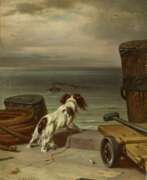

Carl Johann Arnold was a German painter, draftsman, and graphic artist.
He was the son and pupil of the designer and wallpaper maker, landscape and portrait painter, lithographer, and decorator Carl Heinrich Arnold (1793-1874).
He first studied at the Academy in Kassel and then went to Berlin. Carl Johann Arnold painted pictures of animals, canvases on historical events, and numerous portraits. In particular, he created many portraits of the German Emperor Wilhelm II, for which he was apparently appointed royal Prussian court painter. Arnold also produced drawings, etchings, and lithographs that were published in the popular magazines of the time.
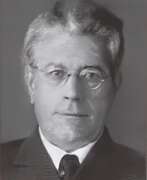

Vsevolod Grigorievich Averin (Russian: Всеволод Григорьевич Аверин) was a Ukrainian Soviet graphic artist and book illustrator. He was one of the most important Ukrainian animal painters of the first half of the 20th century, incorporating avant-garde techniques into his work.
Averin worked in book and easel graphics, especially lithography, as well as portrait and landscape painting. He illustrated many well-known works, including the Atlas of Human Anatomy and a novel by M. Twain. His work was characterised by an exquisite style and harmonious design, and his estate includes some 300 bindings, 3,000 illustrations and 90 posters.
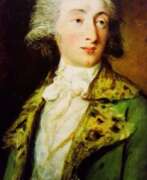

Carl Daniel David Friedrich Bach was a German artist of the late eighteenth and early nineteenth centuries, the Baroque period. He is known as a painter, graphic artist and printmaker.
Bach worked in the historical genre, was a portraitist, animalist, created canvases on allegorical subjects in the spirit of his era. In his works he combined elements of baroque and classicism. The artist often worked in the etching needle technique.
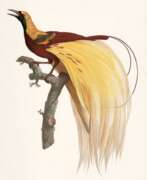

Jacques Barraband was a French zoological and botanical illustrator, renowned for his lifelike renderings of tropical birds. His pictures were based on mounted specimens and his illustration was considered the most accurate ones made during the early 1800s.
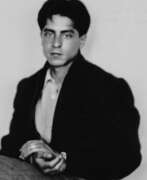

Mirko Basaldella is an Italian and American sculptor and artist.
Born into a creative family, he displayed his talent from a young age and participated in the Italian Biennale. In 1957 Basaldella moved to Cambridge, Massachusetts, and was elected a Fellow of the American Academy of Arts and Sciences in 1962.
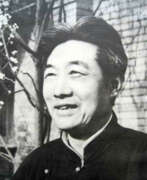

Xu Beihong (Chinese: 徐悲鴻; Wade–Giles: Hsü Pei-hung; 19 July 1895 – 26 September 1953), also known as Ju Péon, was a Chinese painter.
He was primarily known for his Chinese ink paintings of horses and birds and was one of the first Chinese artists to articulate the need for artistic expressions that reflected a modern China at the beginning of the 20th century. He was also regarded as one of the first to create monumental oil paintings with epic Chinese themes – a show of his high proficiency in an essential Western art technique. He was one of the four pioneers of Chinese modern art who earned the title of "The Four Great Academy Presidents".
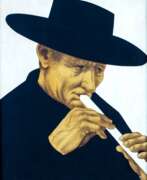

Arne Besser is a contemporary American artist. He received training as an artist at the Art Center School, Los Angeles. There he studied with John Audubon Tyler and Lorser Feidelsson. Beser’s approach to Photo-Realism is to draw from the urban landscape and nature a succinct “set like” image of reality. His city scenes depict New York street life alive with trading and traders, prostitutes and junkies looking for a fix. These visual images iconify the underside of urban life in a way that elevates this point of view to an almost mythic level.


Emma Minnie Boyd, born Emma Minnie Beckett, was an Australian artist. She exhibited publicly between 1874 and 1932 with the Victorian Society of Artists, the International Centenary Exhibition of 1888 (Melbourne), the Royal Academy of Arts (London) and in a joint exhibition with her husband at Como House in Melbourne in 1902.
Emma Minnie Boyd had a talent for watercolour landscapes, although she painted in both watercolour and oil, depicting interiors, figures, portraits, still lifes and floral studies. She is part of the Boyd artistic dynasty that began with Emma and her husband Arthur.


Arthur Brusenbauch was an Austrian painter. Arthur Brusenbauch learned from Johann Kautsky and then worked as a stage decorator himself. He studied in Vienna at the Staatsgewerbeschule and the Academy of Fine Arts, interrupted by military service and imprisonment. In 1920 he became a member of the Vienna Secession, and in 1939 he moved to the Künstlerhaus. In 1928 he had represented Austria in the art competitions of the 1928 Olympic Games. From 1937 to 1941 he participated in all major German art exhibitions in Munich with seven oil paintings. There, in 1939, Hitler acquired the picture of Melk an der Donau in festive decorations. Brusenbauch, who is attributed to late impressionism, dealt with fresco painting and graphics.
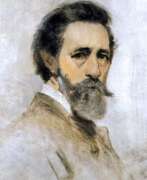

Anton Burger was a German painter, draftsman and etcher. He was a prolific and versatile painter, producing works in almost every genre. His paintings sold very well and, in the area around Kronberg, it was considered a sign of good taste to have a "Burger" in one's home. In 1861, he and Jakob Fürchtegott Dielmann (an old friend from his days at the Städelschule) founded the Kronberg Artists' Colony, where he remained until his death. He was highly regarded and came to be known as the "King of Kronberg".
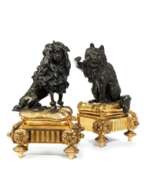

Philippe Caffiéri was a French sculptor. The son of Jacques Caffieri, he was received as a maître fondeur-ciseleur, joined his father's workshop and sometimes signed his independent works, especially after the death of his father in 1755, P.CAFFIERI.


Randolph Caldecott was a British artist and illustrator, born in Chester. The Caldecott Medal was named in his honour. He exercised his art chiefly in book illustrations. His abilities as an artist were promptly and generously recognised by the Royal Academy. Caldecott greatly influenced illustration of children's books during the nineteenth century. Two books illustrated by him, priced at a shilling each, were published every Christmas for eight years.
Caldecott also illustrated novels and accounts of foreign travel, made humorous drawings depicting hunting and fashionable life, drew cartoons and he made sketches of the Houses of Parliament inside and out, and exhibited sculptures and paintings in oil and watercolour in the Royal Academy and galleries.
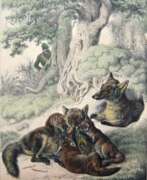

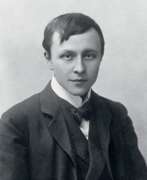

Alfred Kubin was an outstanding Austrian engraver, illustrator and writer, and a prominent representative of the Symbolic and Expressionist trends in the visual arts in the first half of the 20th century. Alfred Kubin's works are full of phantasmagoric and grotesque depictions of dreams, motifs of desolation and fear.
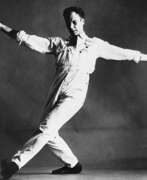

Mercier Philip "Merce" Cunningham was an American dancer and choreographer who was at the forefront of American modern dance for more than 50 years. He frequently collaborated with artists of other disciplines, including musicians, graphic artists and fashion designers. Works that he produced with these artists had a profound impact on avant-garde art beyond the world of dance. There have been numerous exhibitions dedicated to Cunningham's work. Also, his visual art is represented by Margarete Roeder Gallery.
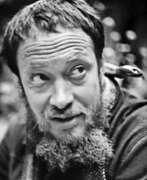

Rostislav Alexandrovich Danov (Russian: Ростислав Александрович Данов) was a Soviet artist of the late twentieth century. He is known as a graphic-animalist, naturalist, writer and professional snake artist.
Rostislav Danov began practicing animalistics in the last years of his life. He was the author of many works, some of which are kept in the Darwin Museum in Moscow. The artist illustrated books, including "Rare and Endangered Animals. Amphibians and Reptiles." Gorlov was also working on an unfinished book, "Year of the Snake," where he planned to describe the seasons of Turkmen nature through the eyes of a gyurza. His manuscripts, hundreds of drawings and 15 volumes of field diaries with graphic sketches have been preserved.


Giuseppe Maria Alberto Giorgio de Chirico, an Italian artist renowned for his profound influence on the Surrealist movement, stands as a seminal figure in 20th-century art. Born in Volos, Greece, in 1888, de Chirico was a visionary painter, sculptor, and writer whose works profoundly altered the landscape of modern art. His paintings, characterized by their dreamlike quality, enigmatic compositions, and the juxtaposition of classical and modern elements, delve into the mysteries of the subconscious, exploring themes of nostalgia, metaphysics, and the uncanny.
De Chirico's art is distinguished by its unique blend of classical motifs with surreal, dreamlike atmospheres, creating a sense of profound mystery and unease. His most famous works, such as "The Enigma of an Autumn Afternoon" and "The Melancholy of Departure," exhibit deserted cityscapes filled with elongated shadows, enigmatic figures, and classical architecture, which became hallmarks of his style. These paintings not only prefigured the Surrealist movement but also influenced countless artists with their exploration of the psyche, the distortion of space, and the play of light and shadow.
His impact on culture and art is undeniable, with his works housed in prestigious museums and galleries worldwide, including the Museum of Modern Art in New York and the Tate Modern in London. De Chirico's ability to evoke the mysterious interconnection between the ancient and the modern through his art continues to captivate collectors and experts in the fields of art and antiques. His innovative approach to painting and sculpture has solidified his position as a key figure in the development of modern art.
For collectors and enthusiasts keen on exploring the depths of 20th-century art and the enigmatic world of Giuseppe Maria Alberto Giorgio de Chirico, staying informed about new discoveries, auction events, and sales of his works is essential. We invite you to sign up for updates to ensure you never miss an opportunity to engage with the enduring legacy of this remarkable Artist. This subscription is your gateway to the latest news related to de Chirico, focusing exclusively on product sales and auction events associated with his influential oeuvre.
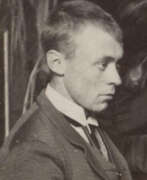

Pieter Cornelis de Moor, a Dutch artist, stands out as a versatile and innovative figure in the art world. His education at the Academy of Visual Arts in Rotterdam and the Drawing Academy in Antwerp laid the foundation for a career marked by diversity and creativity. De Moor's achievements, including a silver medal in the Prix de Rome in 1887, underline his early recognition and the promise of his artistic journey.
De Moor's artistry was not confined to a single medium; he was adept in drawing, etching, painting, watercolor, producing lithographs, and working as an illustrator. His artworks, ranging from "Dancing Women" to "Poultry on a Yard" and "An Elegant Lady Feeding Peacocks," showcase his broad thematic interests and technical skills. Notably, his works are held in prestigious collections, including the Rijksmuseum and the Dordrechts Museum.
The artist's life was rich with experiences, having worked across Europe and eventually settling in the United States. His legacy, punctuated by exhibitions in museums such as Museum Boijmans Van Beuningen and the Drents Museum, continues to captivate art enthusiasts and collectors.
For collectors and art experts, delving into the works of Pieter Cornelis de Moor offers a unique glimpse into the evolution of Dutch art. His contributions, particularly in the realm of Symbolism, highlight an era of artistic exploration and innovation.
Stay informed about new product sales and auction events related to Pieter Cornelis de Moor by signing up for updates. This subscription is your gateway to the latest acquisitions and opportunities in the world of this distinguished artist.
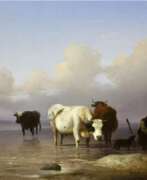

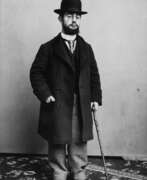

Henri de Toulouse-Lautrec was a distinguished French Post-Impressionist artist, renowned for his deep insights into Parisian nightlife and the world of entertainment in the 1890s. Born into an aristocratic family in Albi, France, Toulouse-Lautrec faced significant health challenges. He suffered from a rare condition, possibly pycnodysostosis, which stunted the growth of his legs following two fractures during his adolescence, leading to a notably short stature as an adult.
Despite his physical limitations, Toulouse-Lautrec immersed himself in art, becoming a key figure in the Post-Impressionist movement alongside artists like Paul Cézanne and Vincent van Gogh. He is particularly celebrated for his vibrant and expressive depictions of the bohemian lifestyle in late 19th-century Paris, often featuring scenes from brothels and nightlife venues. His unique style combined elements of Art Nouveau and lithography, as evidenced in famous works such as "Moulin Rouge: La Goulue" and "At the Moulin Rouge: The Dance".
Toulouse-Lautrec's work offers a window into the Parisian entertainment scene of his time, marked by a vivid use of color and a candid portrayal of his subjects. His ability to capture the essence of Parisian society, from dancers to prostitutes, in an era of great artistic and cultural dynamism, makes his work particularly valuable to art collectors and experts.
For those interested in the art and life of Henri de Toulouse-Lautrec, staying informed about sales and auction events is essential. Sign up for updates to receive the latest news on pieces by Toulouse-Lautrec available for purchase or auction. This subscription focuses exclusively on new product sales and auction events related to Toulouse-Lautrec, ensuring that enthusiasts and collectors don't miss out on any opportunity to acquire pieces from this iconic artist.
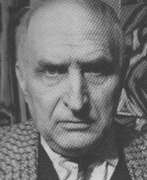

Arthur Degner was a German painter, graphic artist and sculptor. Degner studied between 1906 and 1908 at the Art Academy in Königsberg under Ludwig Dettmann and Otto Heichert. In 1909 he came to Berlin after a stay in Munich. In 1912 he exhibited in the gallery of Paul Cassirer, at whose suggestion he had traveled to Paris in 1910. In 1919 he became a board member of the Free Secession, of which he had been a member since 1911. In 1920 he was appointed to the Königsberg Academy. In 1925 he returned to Berlin, where he taught at the Academy of Fine Arts (HBK). From 1931 to 1933 he was chairman of the Berlin Secession. After the National Socialists seized power, he was banned from working and exhibiting. Nevertheless, the Villa Romana Prize of the German Association of Artists enabled him to study in Florence in 1936 and in 1937 he became a member of the Association of Berlin Artists.
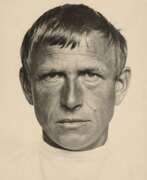

Wilhelm Heinrich Otto Dix was a German artist whose work stands as a stark, unyielding reflection of the societal tumult and trauma of the early 20th century. Born in 1891 in Untermhaus, Germany, Dix's early life was steeped in the arts, his ambition to become an artist nurtured by both familial influence and formal education in Dresden. His experiences as a soldier in World War I deeply influenced his artistic direction, leading him to vividly depict the horrors of war and the decay of the Weimar Republic with a brutal realism that became his signature style.
Dix's association with the Dada movement and the New Objectivity (Neue Sachlichkeit) further honed his critical, often cynical portrayal of post-war society. His works, such as "The Trench" and "War Cripples," expose the visceral aftermath of conflict, while his engagement with the Dadaists imbued his art with a disruptive, confrontational energy against societal norms and the art establishment.
Perhaps most notable is Dix's ability to capture the psychological depth and societal critiques through his portraits and landscapes, which ranged from the grotesque to the surreal. Paintings like "Portrait of the Journalist Sylvia von Harden" and the triptychs "Metropolis" and "War" are emblematic of his keen observation and stark depiction of the era's social and political unrest.
Despite facing significant adversity, including being labeled a degenerate artist by the Nazi regime and facing professional and personal setbacks, Dix's legacy as a painter and printmaker endures. His works are not only historical documents but also profound reflections on humanity, war, and society, resonating with collectors and art experts alike.
For enthusiasts of culture, art, and history, Dix's oeuvre offers an unflinching look into the human condition under the strain of societal and political upheaval. His contributions to painting and printmaking continue to be celebrated in museums and galleries worldwide, underscoring the enduring relevance of his work.
For those interested in exploring the profound depth and historical significance of Otto Dix's work, signing up for updates on new product sales and auction events related to his art can provide invaluable insights. This subscription is a gateway to staying informed about opportunities to engage with the tangible pieces of Dix's enduring legacy.
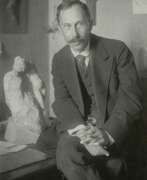

Vladimir Nicholaevich Domogatsky (Russian: Владимир Николаевич Домогацкий) was a Russian sculptor, teacher, and Honored Art Worker of the RSFSR, known for his contribution to the development of Soviet sculpture. Born in Odessa in 1876 and spending his early years in Switzerland and Ukraine, Domogatsky's life and career were predominantly centered in Moscow. He studied law at Moscow University and then took up sculpture under the tutelage of S.M. Volnukhin and S.V. Ivanov. Domogatsky's work was greatly influenced by the works of P. P. Trubetskiy, Auguste Rodin, the animalist painter R. Bugatti and others. Travels to Paris and Italy contributed to the improvement of his skills, especially in working with marble.
Domogatsky's work was diverse: genre, animalistic and portrait sculpture. Notable works include Boy in a Coat (1904), Portrait of an Old Actor (1913), and Portrait of Lev Shestov (1917), demonstrating his skill in merging Russian sculptural traditions with Western European influences. Teaching at the Moscow Institute of Fine Arts, organizing and participating in exhibitions all attest to his significant influence on the Soviet art scene. His works are held in prestigious museums, including the State Tretyakov Gallery, reflecting his enduring legacy in Russian art.
For collectors and experts, Domogatsky's sculptures represent a unique combination of historical and cultural narrative, embodied in the subtlety of his craftsmanship. His contributions to monumental propaganda and theoretical developments in sculpture further cement his status as a key figure in 20th century Soviet art.
To keep abreast of exhibitions and auctions featuring works by Vladimir Nikolayevich Domogatsky, we encourage you to subscribe to our updates. By subscribing, you will be the first to know about new sales and auction events related to this esteemed artist and enrich your collection with items of significant historical and artistic value.
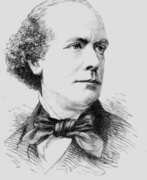

Richard Doyle was a British illustrator of the Victorian era. His work frequently appeared, amongst other places, in Punch magazine; he drew the cover of the first issue, and designed the magazine's masthead, a design that was used for over a century.


Pierre Louis Dubourcq was a Dutch landscape painter, lithographer and etcher. He was a student of Jan van Ravenswaay in Hilversum in 1834 and of Andreas Schelfhout in The Hague in 1835. He mainly painted mountain and forest landscapes and he etched, drew, created watercolors and lithographs. From 1834 to 1858 he took part in the exhibitions in Amsterdam and The Hague. Prince Alexander of Orange-Nassau commissioned him to do some watercolors of the falconry hunts at Het Loo Castle. He was a member of Arti et Amicitiae, the Koninklijke Academie van Beeldende Kunsten and the Natura Artis Magistra Society.


William Herbert "Buck" Dunton was an American artist and illustrator born in 1878 and passed away in 1936. He was one of the founding members of the Taos Society of Artists, a collective of artists in New Mexico that was considered one of the most influential art groups in the United States in the early 20th century. Dunton was known for his works dedicated to the life and culture of Native Americans, as well as many Western landscapes. In his paintings, he conveyed the beauty and power of nature, as well as the life of Native Americans in their natural environment. Buck Dunton was a recognized master of his craft, and his works remain popular and sought after in the world of art.
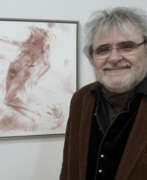

Thomas Duttenhoefer was a German sculptor, draughtsman, graphic artist, and illustrator, and professor at the University of Mannheim.
In addition to his human figures, Thomas Duttenhoefer's figurative work includes many depictions of animals in a deliberately crude manner.
He is a member of the New Darmstadt Secession, the Palatinate Secession and the Argo Group, Speyer.


Marcel Dzama is a contemporary artist from Winnipeg, Manitoba, Canada who currently lives and works in New York City. His work has been exhibited internationally, in particular his ink and watercolor drawings. Dzama works extensively in sculpture, painting, collage, and film. The artist is also known for his intricate dioramas and large scale polyptychs that draw from his talents across a range of media. Dzama works in multiple disciplines to bring his cast of human figures, animals, and imaginary hybrids to life, and has developed an international reputation and following for his art that depicts fanciful, anachronistic worlds.
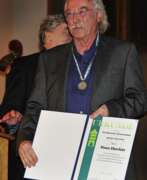

Klaus Eberlein was a German graphic artist, illustrator and ceramic sculptor. He initially completed training as a chromolithographer. From 1962 to 1968 he attended the Academy of Fine Arts in Munich, and from 1968 he was a master student of Hermann Kaspar, receiving a final diploma from the academy. Eberlein was a member of the Association for Original Etching, the Dachau Artists' Association and the Munich Artists' Association. In 2013 he was accepted into the South German literary association Münchner Turmschreiber.
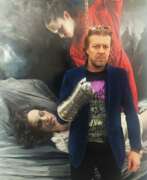

Martin Eder is a German artist.
From 1986 until 1992, he studied at the Augsburg University of Applied Sciences, and from 1993 until 1995 continued his studies at the Academy of Fine Arts Nuremberg, attending the University of Kassel in 1995 and 1996. From 1996 until 1999 he studied under Eberhard Bosslet at the Dresden Academy of Fine Arts and was a master student under Professor Bosslet from 1991 until 2001. Eder lives and works in Berlin. He plays in his own experimental rock band under the name Richard Ruin et Les Demoniaques.


Otto Eerelman was a Dutch painter; best known for his depictions of dogs and horses. He was also a court painter and did several portraits of Wilhelmina, as Princess and Queen. His best known painting, "De paardenkeuring op de Grote Markt op de 28ste augustus", depicts an annual celebration (featuring horses) held to commemorate the lifting of the Siege of Groningen.
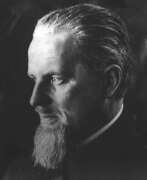

Ivan Semyonovich Efimov (Russian: Иван Семёнович Ефимов) was a Russian and Soviet artist of the first half of the twentieth century. He is known as an animal painter, graphic artist, sculptor, illustrator and reformer of the puppet theater.
Ivan Efimov worked in different genres and techniques, but all his work, including decorative and applied art, was focused on animalistic themes. He created works for the Moscow subway, train stations, sanatoriums and many other places and became famous for his technique of through volume relief in sculpture. The master also illustrated more than 20 books.
Efimov also created erotic works - about a thousand sheets with various thematic series, but the public learned about them only after the collapse of the USSR.


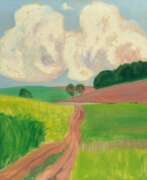

Kaj Ejstrup was a Danish artist, illustrator and sculptor. Above all, he is remembered for the landscapes he painted in the north west of Zealand as a member of the artists' colony known as the Odsherred Painters. In 1932, he was one of the founding members of the Corner artists association. Much of his work can be seen at Odsherreds Museum of Art.
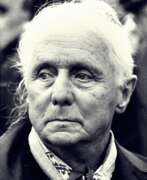

Max Ernst was a pivotal figure in the 20th-century art world, whose work transcended the boundaries of nationality and genre to leave an indelible mark on culture, art, sculpture, and painting. Born in Germany on April 2, 1891, and later becoming a naturalized American and French citizen, Ernst's career was a testament to his relentless innovation and creativity. Known primarily as an artist and painter, Ernst was a founding member of the Dada movement in Cologne before becoming a major proponent of Surrealism in Paris. His early encounters with the works of Pablo Picasso, Vincent van Gogh, and Paul Gauguin at the Sonderbund exhibition in 1912 deeply influenced his artistic direction, infusing it with elements of Cubism and Expressionism. Despite his lack of formal artistic training, Ernst's experimentation with techniques such as collage and frottage showcased his unique ability to blend the absurd with the sublime, making him a central figure in the artistic avant-garde of his time.
Ernst's work is notable for its exploration of the unconscious, using dreamlike imagery and symbolic figures to critique societal norms and delve into the chaos of the human psyche. His experiences in World War I profoundly impacted his worldview, leading to a deep skepticism of Western culture and an enduring search for meaning through art. This is evident in works such as "Europe After the Rain II," which reflects the devastation of war and "The Fireside Angel," inspired by the political turmoil of the Spanish Civil War, showcasing his ability to address contemporary issues through a surreal lens.
Ernst's contributions to art are preserved in major museums and galleries worldwide, including the Tate in the United Kingdom and the Museum of Modern Art in New York. His sculptures, paintings, and collages continue to be celebrated for their innovative techniques and imaginative scope, marking him as a revolutionary figure in modern art. Among his most significant works are "Ubu Imperator," "The Elephant Celebes," and "The Virgin Spanking the Christ Child before Three Witnesses," each reflecting his mastery over a diversity of mediums and themes.
For collectors and experts in art and antiques, Max Ernst remains a symbol of artistic freedom and exploration. His ability to navigate through various artistic movements while maintaining a distinct, innovative voice is a testament to his enduring legacy in the art world. To stay updated on new product sales and auction events related to Max Ernst, signing up for updates is a valuable opportunity for those deeply invested in the nuances of modern and surreal art.


Maria Paula Figueiroa Rego was a Portuguese-British visual artist known particularly for her paintings and prints based on storybooks. Rego's style evolved from abstract towards representational, and she favoured pastels over oils for much of her career. Her work often reflects feminism, coloured by folk-themes from her native Portugal.


Fritz Fleer is a German painter and sculptor. He studied at the Hamburg University of Fine Arts in the class of Edwin Paul Scharf.
As independent artist, Fritz Fleer has been creating works for urban planning since the 1950s; in Hamburg he was commissioned for 17 sculptures by the municipal housing company SAGA.
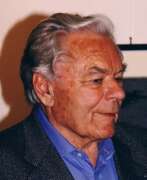

Paul Flora was an Austrian cartoonist, graphic artist, and illustrator known for his skill with pen and ink.
Flora's work has appeared in the famous New York Times and The Observer newspapers, and his drawings have graced the stamps of Liechtenstein and Austria. Paul Flora has been one of Europe's most famous illustrators since the 1960s.
He also produced books, films and sets.


Walton Ford is an American artist. He is known for his large-scale, highly detailed paintings that depict natural history subjects and explore the relationships between humans and animals.
Ford studied at the Rhode Island School of Design and later from Yale University. His work is inspired by the tradition of natural history painting, but he subverts this tradition by using his paintings to critique colonialism, environmental degradation, and the ways in which humans have interacted with the natural world.
Ford's paintings are highly detailed and often include multiple narratives within a single image. He uses a combination of watercolor, gouache, and ink to create his large-scale works, which can be several feet in height and width. His paintings are also highly stylized, featuring elements of graphic design and pop culture.
Ford has exhibited his work extensively, including at the Whitney Museum of American Art in New York, the Hamburger Bahnhof Museum in Berlin, and the Musée de la Chasse et de la Nature in Paris. His work is also held in the collections of several major museums, including the Museum of Modern Art in New York and the Smithsonian American Art Museum in Washington, D.C.
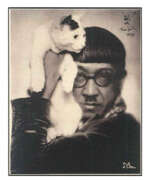

Tsugouharu Foujita was a French twentieth-century artist of Japanese descent. He is known for his unique style, combining elements of Japanese painting and printmaking with European realism.
Foujita created a wide range of works in a variety of genres, including nudes, images of cats, portraits of women and children, and self-portraits. He later converted to Catholicism and began creating paintings with religious themes. The artist was internationally recognized, and his work was exhibited in many countries around the world. His work was characterized by the perfection of pictorial technique, virtuosity of drawing and an atmosphere of sophistication. The master also showed talent in graphics, photography, ceramics, theater, cinema and fashion design. Prices for his paintings were comparable to those of Picasso's works.


Ernst Frick was a Swiss painter. As far as can be ascertained, Frick began painting around 1917. He was taught by Arthur Segal in Ascona. Frick painted in charcoal, oil and watercolour. His preference was for nature and animals, but also working people. He was influenced by the artist group Der Blaue Reiter. In 1924 he was a founding member of the artists' association Der Grosse Bär. After the dissolution of the group Der Grosse Bär in 1941, he remained artistically active and joined newly formed Asconese artist groups.
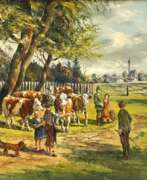

Alfred Fritzsching is a German artist known as Painter, graphic artist, draftsman, sculptor, commercial, commercial graphic artist. He began his training as a commercial graphic artist at the Blocherer School for Graphic and Advertising in Munich and worked as an advertising specialist. In 1970 Alfred Fritzsching became a member of Munich Artists 'cooperative and participated in exhibitions at the Haus der Kunst in Munich. From 1978, he worked as a freelance painter and also as board member and juror of the Munich Artists' Cooperative.


Jan Fyt (March 15, 1611 – September 11, 1661) was a prominent Flemish painter and engraver of the Baroque period, celebrated for his refined still lifes and animal depictions. Born in Antwerp to a wealthy merchant family, Fyt began his artistic training in 1621 under Hans van den Bergh. He later apprenticed with Frans Snyders, a leading master of still life and animal paintings, working in his workshop until 1631. In 1630, Fyt became a master of the Antwerp Guild of Saint Luke.
Between 1633 and 1640, Fyt traveled extensively across Europe, visiting cities such as Paris, Rome, and Venice. In Rome, he joined the Bentvueghels, a society of Northern European artists, where he was nicknamed "Goudvink" (Bullfinch). During his time in Venice, he received commissions from noble families like the Sagredo and Contarini.
Upon returning to Antwerp in 1641, Fyt established his own workshop, producing numerous works that catered to the tastes of aristocratic patrons. His paintings are distinguished by their vibrant palettes, dynamic compositions, and meticulous rendering of textures, particularly the fur and feathers of animals. Contemporaries highly valued his hunting still lifes, as well as his portrayals of flowers and fruits.
On March 22, 1654, Fyt married Françoise van de Sande, with whom he had four children. In 1650, he joined the Antwerp "Sodaliteit der Bejaerde Jongmans" (Sodality of Elder Bachelors), a fraternity that required members to have visited Rome. By 1652, he was elected dean of this guild.
Fyt's artistic legacy comprises approximately 280 paintings, many of which are signed and dated. His works are housed in major museums worldwide, including the Hermitage Museum in St. Petersburg, the Louvre in Paris, and the Kunsthistorisches Museum in Vienna. In addition to painting, Fyt was an accomplished engraver, creating etchings that featured animals and birds.
Jan Fyt passed away on September 11, 1661, in his native Antwerp, leaving an indelible mark on Flemish painting and influencing subsequent generations of artists.
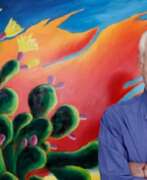

Nicolás García Uriburu was an Argentine contemporary artist, landscape architect, and ecologist. His work in land art was aimed at raising consciousness about environmental issues such as water pollution.
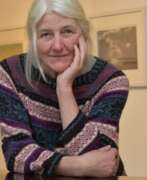

Frauke Gloyer is a contemporary German artist. She studied freehand painting at the University of Fine Arts in Braunschweig. She has been working as a freelance artist since 1988.
Frauke Gloyer's work includes expressionist landscapes, still lifes, portraits and animal studies.


Alexei Nikolaevich Glukharyov (Russian: Алексей Николаевич Глухарёв) is a Soviet and contemporary Russian artist. He is known as a painter and graphic artist, as well as a teacher.
Alexei Glukharyov worked as an art teacher and graphic designer in Central Asia at the beginning of his career. In 1984 his first solo exhibition in Moscow took place. From 1984 to 1990 he created a large collection of horse portraits for state stud farms and breeding farms. His works have been exhibited in Russia and abroad and are also in private and museum collections.
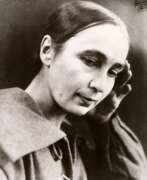

Natalia Sergeevna Goncharova (Russian: Ната́лья Серге́евна Гончаро́ва) was a pivotal Russian avant-garde artist, painter, costume designer, writer, illustrator, and set designer, celebrated for her groundbreaking contributions to several art movements including Rayonism, Futurism, and Cubism. Born in Russia in 1881, Goncharova's artistic journey was marked by her vibrant exploration of Eastern and Western traditions, making her a leading figure in Russian modernism before she relocated to Paris in 1921, where she continued her artistic endeavors until her death in 1962.
Goncharova's work was distinguished by her engagement with the avant-garde, notably through her involvement with movements and groups such as Jack of Diamonds, Donkey's Tail, and Der Blaue Reiter. Her innovative approach blended Primitivism with Russian folk art (luboks), iconography, and modern European styles, making her work highly influential and controversial in its time. For instance, her series "Mystical Images of War" showcased her unique method of merging contemporary events with traditional forms.
Her later years in Paris were characterized by a continued pursuit of innovation, as evidenced by her designs for ballet costumes and sets, further cementing her legacy in the art world. Goncharova's collaborations with notable figures such as her partner Mikhail Larionov and her contributions to the Ballets Russes highlight her versatile talent and enduring influence on both Russian and French avant-garde art scenes.
For collectors and experts in art and antiques, Goncharova's work offers a rich exploration of avant-garde movements and the blending of cultural traditions. Her bold experimentation and pioneering spirit make her pieces highly sought after in the art community.
To stay updated on new discoveries, sales, and auction events related to Natalia Sergeevna Goncharova, sign up for our newsletter. This subscription is your gateway to the latest in the world of avant-garde art, ensuring you're always informed about opportunities to add to your collection.


Vadim Alexeyevich Gorbatov (Russian: Вадим Алексеевич Горбатов) is a Soviet and contemporary Russian artist. He is known as a painter and graphic artist, animalist.
Vadim Gorbatov creates works that are based on field observations and realistic sketches. The artist studied the animal world in his travels from the Siberian tundra to the jungles of Cambodia. He has illustrated many books, including the Red Book of the USSR, and is involved in international projects such as the Artists for Nature Foundation, in which Gorbatov is the only Russian participant. He is also a member of the Union of Artists of Russia and the Wildlife Artists' Union of Great Britain.
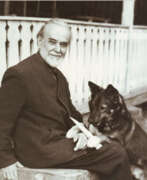

Dmitry Vladimirovich Gorlov (Russian: Дмитрий Владимирович Горлов) was a Soviet artist of the twentieth century. He is known as a graphic artist, sculptor, illustrator, master of decorative and applied plastic art and is considered the founder of Soviet animalistics.
Dmitry Gorlov is the author of monumental and decorative and easel sculptures, as well as toys made of different materials. He created a fountain and bas-reliefs for the Moscow Zoo, as well as reliefs on the monument to the fable writer I. A. Krylov on the themes of his fables. Gorlov also worked at the Gzhel ceramic factory, creating animal statuettes.
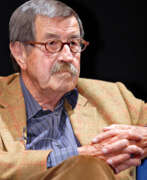

Günter Wilhelm Grass was a German novelist, poet, playwright, illustrator, graphic artist, sculptor, and recipient of the 1999 Nobel Prize in Literature.
Grass is best known for his first novel, The Tin Drum (1959), a key text in European magic realism. It was the first book of his Danzig Trilogy, the other two being Cat and Mouse and Dog Years. His works are frequently considered to have a left-wing political dimension, and Grass was an active supporter of the Social Democratic Party of Germany (SPD). The Tin Drum was adapted as a film of the same name, which won both the 1979 Palme d'Or and the Academy Award for Best Foreign Language Film. In 1999, the Swedish Academy awarded him the Nobel Prize in Literature, praising him as a writer "whose frolicsome black fables portray the forgotten face of history".


Willy Leopold Guggenheim, known as Varlin, was a Swiss painter. His figurative work emphasized the fragility of everyday life.
Varlin was friends with Hugo Loetscher and Friedrich Dürrenmatt, and painted them.
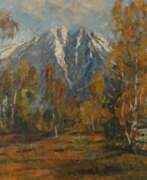

Karl Georg Hänel was a German landscape and animal painter and commercial artist.
Hänel undertook study trips to Mecklenburg, Bavaria, Switzerland and the Salzburg Alps. He mainly worked as a landscape and animal painter. As a commercial artist he created advertising posters, calendar pages and advertisements.
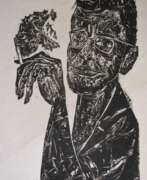

Karl-Heinz Hansen-Bahia, born in 1915 in Hamburg, Germany, was a multi-faceted artist whose work spanned various mediums, including woodblock prints, painting, sculpture, and filmmaking. His artistic journey began in earnest after World War II, with his first woodcut created in 1946. His early work, heavily influenced by the renowned artist Dürer, focused on religious scenes, showcasing his intricate and expressive style.
In 1949, Hansen-Bahia emigrated to Brazil, a move that profoundly influenced his artistic style and career. He taught art in São Paulo and later moved to Salvador Bahia, where his first exhibitions in the country were held. His work during this period began to reflect more of his adopted country's influence than his German origins, leading to a distinctive style that contributed to his prominence as a post-war German artist.
Hansen-Bahia's connection to Germany remained strong despite his move to Brazil. He returned briefly to Germany but later accepted a professorship at the Art Academy in Addis Ababa, Ethiopia. After gaining Brazilian citizenship, he continued to exhibit his work internationally, including in Europe, Japan, and the Americas. His importance in the Brazilian art scene was significant, as he became known for his portrayals of the people and landscape of the state of Bahia.
His artistic legacy was celebrated in extensive retrospectives held in Germany in 1971-72, which were among the last before his death in Brazil in 1976. Hansen-Bahia's work is a testament to his versatility and ability to adapt and evolve his style in response to his changing environments and experiences.
To stay informed about Karl-Heinz Hansen-Bahia, collectors, auctioneers, and art experts are encouraged to sign up for updates. These updates will provide information about new product sales and auction events related to Hansen-Bahia's art.


Moritz Heymann was a German painter, graphic artist and art teacher. Heymann initially worked primarily as a graphic artist and exhibited pencil drawings and lithographs. He created portrait and animal studies, especially of horses. Later he mainly showed paintings in exhibitions. From 1914 he often chose circus scenes as a motif for his works. He was a representative of Munich Impressionism.
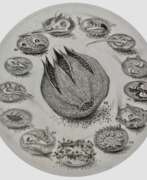

Hipkiss is the pseudonym of Alpha and Christopher Mason, both artists born in 1964 in Britain.
The artists began working together in the UK, then moved to France, where they continue to live and work. They are known for detailed, detailed figurative drawings created in a mixed media technique that combines pencil, silver ink and metallic foil. The artists draw large-scale urban landscapes, landscapes, strange insects, plants and birds, depicting images of a utopian future where nature has conquered the industrial environment.
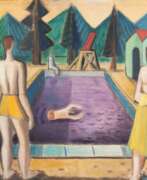

Wolf Hoffmann, also Wolfgang Hoffmann, was a German painter, printmaker, and printmaker and professor at the Academy of Fine Arts in Berlin-Weißensee.
He produced many works, mainly landscapes, figurative and floral still lifes, etchings, as well as woodcuts and linocuts.
During World War II, many of Hoffmann's works were destroyed, but during those difficult years he learned to work with ceramics and painted tiles. After 1945 he found the strength to return to painting.


Adi Holzer is an Austrian visual artist, illustrator, draughtsman, painter, graphic artist, glass painter and sculptor of bronze sculptures and glass sculptures. He works alternately in his studios in Værløse in Denmark and Winklern in Austria. In Austria he is a member of the Carinthian Art Association.
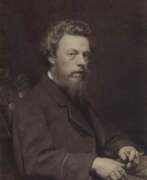

Apolinary Gilyaryevich Horawski (Russian: Аполлинарий Гиляриевич Горавский) was a Belarusian-born Polish painter, acclaimed for his significant contributions to 19th-century European art, particularly during his time in St. Petersburg. Born on January 23, 1833, Horawski's artistic journey began in his youth, showing a keen interest in drawing and painting over military disciplines while at the Brest-Litovsk Cadet Corps. This passion led him to the Imperial Academy of Arts, where he studied under notable instructors and eventually graduated with a gold medal.
Horawski is celebrated for his masterful landscapes and portraiture, which vividly captured the essence of Eastern European rural life. His works often depict serene natural settings and the daily lives of the local people, earning him a place in prestigious collections, including the Belarusian National Arts Museum and the State Tretyakov Gallery. Some of his notable works include "Evening in Minsk" and "Portrait of a Young Woman in a White Dress."
The artist's legacy continues to influence art collections and is frequently featured at international auctions, where his pieces are highly valued for their historical and artistic significance. Collectors and art enthusiasts interested in Horawski's work can explore his paintings and their impact on 19th-century art at major auctions and exhibitions globally.
For enthusiasts of 19th-century European art and collectors eager to discover more about Apolinary Horawski's work, subscribing to our newsletter is an excellent way to stay informed about upcoming sales and auction events featuring his art. Ensure you don't miss out on acquiring a piece of this celebrated artist's legacy. Sign up today to receive exclusive updates and insights!
